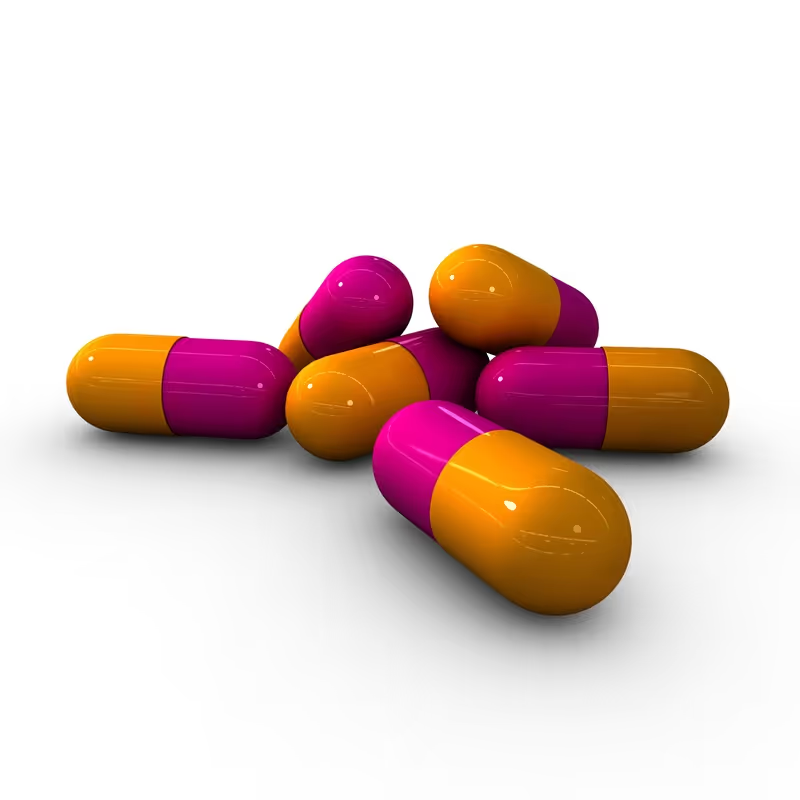Employees who abuse substances, including alcohol and drugs-whether during work hours or on their own time-can create significant challenges in the workplace. Issues related to alcohol and drugs in the workplace can impact employers, managers, and co-workers alike.
These problems can include:
- diminished job performance
- lowered productivity
- absenteeism
- tardiness
- high employee turnover
- increased medical and workers' compensation bills
- potential workplace violence issues
Employees who abuse drugs and alcohol can also make a workplace more volatile and dangerous, exposing employers to legal liability and other legal issues, not only with drug use in the workplace laws, but employee protection laws as well. While doing drugs or drinking alcohol during non-work hours is not necessarily illegal, if an employee comes to work inebriated or if their substance use otherwise affects their work, it becomes a concern for their employer. If you suspect an employee is abusing substances such as drugs or alcohol at work, it's essential to follow a structured approach. Start by referencing your company's policy on drugs in the workplace. Properly addressing the situation helps maintain workplace safety and compliance with legal requirements.
What to Do If You Suspect Drug or Alcohol Use in the Workplace: 6 Critical Steps
Step 1. Review Your Workplace Drug and Alcohol Policy
Suspect employee is under the influence? First and foremost, you must have a written drug and alcohol testing policy. It should include drug and alcohol testing for reasonable suspicion. A general policy statement is not enough to permit testing; if your workplace drug and alcohol policy does not include testing for reasonable suspicion, you may want to consult a workplace consulting firm or your legal counsel to help you implement one.
Step 2. Document Observations and Incidents
Suspicions regarding an employee who may be under the influence may come from co-workers or clients, often before it is noticed by a supervisor. Document any complaints, concerns, behavior patterns, or witnesses to the behavior. Be as specific as possible, with detailed descriptions of behavior and appearance, and the dates and times of each observation. Encourage employees to report drug use at work anonymously through designated channels to maintain workplace safety.
Step 3: Observe Behavior for Substance Use Signs
It is important that management also observe the behavior. A second management person should also observe the behavior. Both observers need to document their observations in detail. This should include references to:
- odors
- speech
- eyes being dilated or constricted
- emotional issues such as agitation or irritability
- drowsiness
- excessive sweating
- other telltale signs
Step 4: Meet with the Employee to Discuss Observations
Once the situation is documented and everyone is in agreement, only then should you meet with the employee for a discussion of what has been observed. And always have a second party at the meeting to act as a witness (an HR staff member is a great choice). You then have the options to follow whatever is stated in your company policy if you suspect an employee is using drugs. Start by going over the log of behaviors and any accompanying evidence you might have (e.g., emails, video, virtual meeting recordings, etc). Then, give the employee the opportunity to explain their behavior; for instance, they could be acting erratically because of a death in their family or due to loss of sleep after a new baby is born. If you still believe the employee might be under the influence at work, send them for a drug test.
Step 5: Conduct a Drug or Alcohol Test
Drug testing is a legal issue and may depend on your company policy and legal advisors. If your policy allows for it, contact your drug test facility to notify it that you have an employee on the way for reasonable suspicion testing. Download a free Employee Drug Test Consent Form template to ensure there are no legal issues when testing employees for substances. If you send the employee for drug or alcohol testing always explain that in order to rule out the possibility that the employee is in violation of the company's drug and alcohol policy, you will be sending them for a drug and/or alcohol test. If you have not obtained a drug testing consent previously, you should have a consent form available at this meeting for the employee's signature. Never allow the employee to drive themselves. Always provide transportation to and from the facility. If they refuse the test refer to your drug and alcohol policy, especially if your policy states that refusing the test will be treated as a positive drug test result or will result in immediate termination of employment.
Download your free cheat sheet on How to Deal with Employee Drug Use to learn what to do about employee drug use in your office.
6. Take Appropriate Action Based on the Results
If the drug or alcohol test results are negative, contact the employee and return them to their prior job as soon as possible. If it is positive, you have the option of sending them for counseling or treatment and returning to work. Many organizations will offer employees the chance to test again if they get a positive result the first time before taking disciplinary action, to account for potential false positives. Most policies offer return to work rights with a clause that allows for termination if the employee is found under the influence at work again. An employer does have the option to terminate immediately for positive test results. If you have any issues contact experts, such as SACS Consulting, to help you develop or modify your company policy and handbook. It's wise to use people who are professionally trained in drug-and-alcohol-at-work issues, non-physical crisis intervention, verbal de-escalation, nonviolent confrontation management, and employee protection techniques, as well as assistance and training for management and supervisory personnel.
If you need help interviewing your employee read the "PEACE Model of Investigation Interviews" to try a conversational and non-confrontational approach.
Frequently Asked Questions
1. How do you deal with an employee who is suspected of drug use?
To deal with an employee suspected of drug use, first, ensure you have a written drug and alcohol testing policy that includes testing for reasonable suspicion. Then, document any suspicions or observations of the employee's behavior, ensuring multiple witnesses if possible. Meet with the employee, accompanied by a second party as a witness, to discuss the observed behavior. Depending on your company policy and legal advice, consider sending the employee for drug or alcohol testing. Finally, act on the results accordingly, whether negative or positive, following your company's policies and legal guidance (if applicable).
2. Can I fire an employee for drug use?
Yes, depending on your company policy. If an employee's drug test results are positive, termination may be an option, as many policies allow for action up to termination if an employee is found under the influence at work.
3. What can I do if I suspect an employee is under the influence?
First, consult your organization's drug and alcohol testing policy. Next, document suspicions or observations of the employee's alleged drug use. Finally, if you have reasonable suspicion, meet with the employee to discuss their behavior, including the potential to send them for drug testing.
4. What is the most common false positive drug test?
Many factors can contribute to a false positive drug test, including over-the-counter or prescription medications such as weight loss pills, antidepressants, NSAIDs (Motrin, Advil), and dextromethorphan (Robitussin, Delsym), as well as cannabidiol (CBD) products, second-hand marijuana smoke, mouthwash, and eating poppy seeds.
5. What happens if you test positive for a drug screen?
Depending on the company's policies, an employee could face disciplinary action if they test positive on a drug test, which could include termination of employment, suspension, or a requirement to attend a substance abuse program. Some organizations may offer the option for a retest or confirmatory testing, especially if the employee challenges the result as a false positive.
6. What is the most common drug test in the workplace?
The most common drug test in the workplace is a urinalysis, or urine test, which can be used to detect alcohol, amphetamines, benzodiazepines, opiates/opioids, cocaine, and marijuana (THC).
7. What supplements can cause a false positive?
Wellness supplements that can cause a false positive result on a drug test can include poppy seeds, turmeric, vitamin B12, and CBD products, though these scenarios are rare if you take an FDA-approved product in a normal dosage.
8. What are the odds of getting a false positive drug test?
According to Drugs.com, between five and 10 percent of drug tests may yield false positives, while 10 to 15 percent may yield false negatives. For this reason, many organizations will offer employees the opportunity for a second test before taking disciplinary action.
9. Can an employee fight a false positive drug test?
If an employee believes their positive drug test to be a false result, they can challenge it and ask their employer for a retest. They should be transparent about any substances they had consumed that might result in the false positive. While not every organization will allow a second test, employees can ask for this accommodation, especially if they are taking certain medications or supplements.
10. How would you address an employee who is abusing substances?
If you suspect an employee is abusing substances, follow your workplace drug and alcohol policy. Document observations and have multiple witnesses if possible. Arrange a meeting to discuss their behavior and, if necessary, request a drug test in accordance with company guidelines. Ensure actions align with legal regulations and provide access to support programs if available.
11. What should you do if you find drugs at work?
If you find drugs at work, secure the substance safely and discreetly. Notify HR or a designated authority and document the incident in detail, including the location, time, and witnesses. Follow company procedures for handling illegal substances, which may include involving law enforcement if necessary. Ensure confidentiality to maintain workplace integrity.
12. How can employers prevent workplace substance abuse?
Employers can prevent substance abuse by implementing a clear drug and alcohol policy, offering employee assistance programs, and providing training for managers to recognize signs of abuse. Routine workplace drug testing and a supportive culture emphasizing well-being can also reduce the risk of substance-related issues.
13. What are the legal implications of workplace drug use?
Workplace drug use can expose employers to liabilities, including safety risks, decreased productivity, and legal issues related to employment laws. Employers should ensure policies comply with local regulations and seek legal counsel to address situations appropriately while protecting employees' rights. Addressing substance abuse in the workplace requires a thoughtful, policy-driven approach to ensure compliance and maintain a safe, productive environment. Taking the right steps can help protect your team, your business, and the individual involved. If you need expert guidance or tools to navigate these challenges, schedule a call with our workplace case management experts or download our free Drug & Alcohol Policy Cheat Sheet today to get started.










